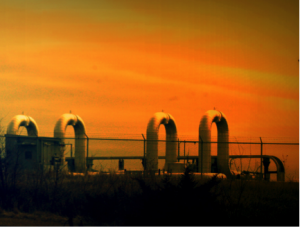 On the fourth day of his administration, President Trump signed multiple executive actions designed to advance the Keystone XL and Dakota Access pipelines, since related memos specifically invited project developers to re-submit applications for permits and approvals to begin or continue construction. Many view these decisions as a signal the president intends to fulfill campaign promises promoting the oil and gas industries, as described in his America First Energy Plan. Pipeline opponents, however, are already preparing for legal battles seeking to block these projects.
On the fourth day of his administration, President Trump signed multiple executive actions designed to advance the Keystone XL and Dakota Access pipelines, since related memos specifically invited project developers to re-submit applications for permits and approvals to begin or continue construction. Many view these decisions as a signal the president intends to fulfill campaign promises promoting the oil and gas industries, as described in his America First Energy Plan. Pipeline opponents, however, are already preparing for legal battles seeking to block these projects.
Keystone XL proponents have consistently argued the pipeline will create thousands of good paying jobs while increasing the nation’s energy independence. Environmentalists, however, believe the pipeline only furthers adverse consequences for climate change by enhancing oil and gas use. According to the State Department’s Supplemental EIS, the pipeline in actuality will neither create the suggested long-term economic and jobs impact nor have a significant impact on greenhouse gas emissions.
Dakota Access is more than 90% complete but in late 2016, faced stiff opposition from protesters supporting the Standing Rock Sioux Tribe’s concerns. With only 1,100 feet remaining, project plans would route the pipeline across sacred land as well as underneath Lake Oahe creating water quality concerns. In December, the Army Corps denied a construction permit with Assistant Secretary for Civil Works Jo-Ellen Darcy saying “The best way to complete that work responsibly and expeditiously is to explore alternate routes for the pipeline crossing.” Both the Keystone and Dakota pipelines, however, may face permitting and legal challenges that could hold up construction. This is especially true for Keystone which never obtained the requisite permits in Nebraska and could face legal challenges if it relies on eminent domain.
There is less than meets the eye here. The Dakota pipeline is a no brainer, outside of a few environmental extremists and some native American activists. The pipeline is not… Read more »
I broadly agree with the gist of Steve’s argument here. But there are some further questions to consider about Keystone XL. Since the pipeline is a privately financed, Canadian project,… Read more »
My point was more about the incremental impact of the pipeline on oil sand production. Unless you think the current oil price is stable any decline in oil prices (which… Read more »
Steve: There is no stagnation in world oil demand — world oil consumption has been rising approximately linearly for the past 20 years due to rising oil demand in developing… Read more »
As you’ve pointed out, the crux of the issue is reducing demand, efforts to curtail supply infrastructure are doomed to failure if demand continues to grow, because as prices rise,… Read more »
Steve: You are correct that all things being equal, just lowering demand in one place will not effect overall emissions because people in other countries will purchase the oil. But… Read more »
Steve, There is opinion and evidence to refute the statement below. We have the technology to do the job, and reducing demand does not hinder economic growth. If you look… Read more »
The Dakota pipeline can be rerouted away from water resources …. a real non-brainer. We have so many pipeline spills, why do we want to risk this one near a… Read more »
[…] Original Post […]